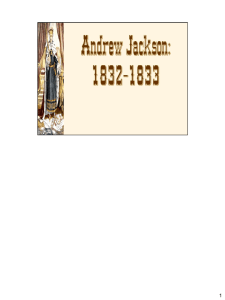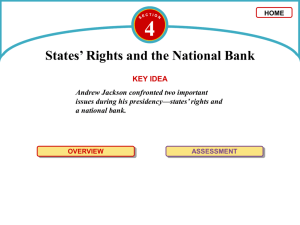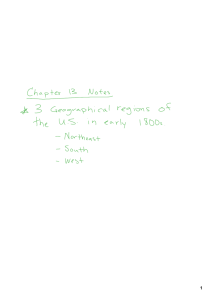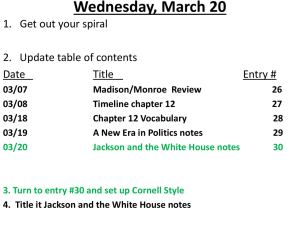Constitutional Disputes and Crises
advertisement
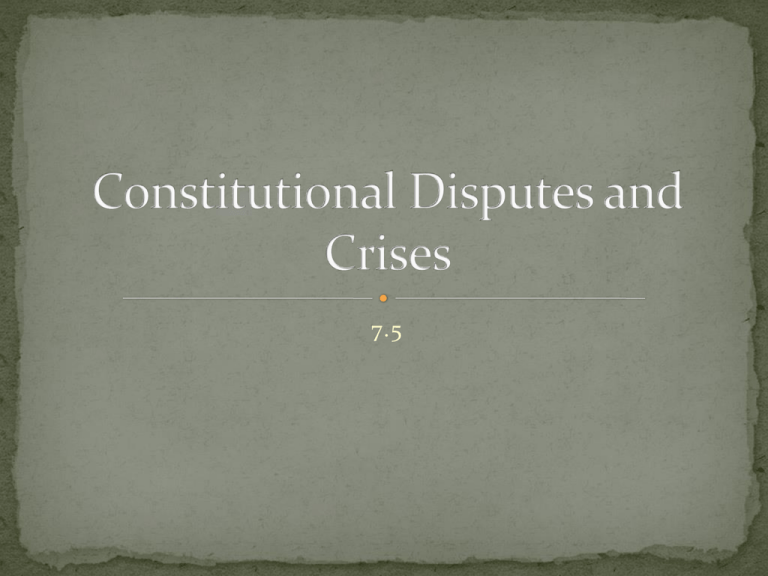
7.5 Evaluate the significance of the debate over tariffs and the idea of nullification. Summarize the key events of the conflict over the second Bank of the United States in the 1830s. Analyze the political environment in the United States after Andrew Jackson. The Nullification Crisis The Bank War Politics After Jackson Read 7.5 Compare the viewpoints of Jackson and Calhoun on the issue of nullification. Fill in the three bullet points on each person as seen in the chart on pg. 255 The protective tariffs had long been a topic of debate in the United States. The north generally favored them and the south disliked them. In 1828 congress adopted an especially high tariff, the southerners called it the Tariff of Abominations. This tariff had been designed to promote American industry but also to ensure Jackson’s victory in his presidential election. Jackson’s Vice President John C. Calhoun of South Carolina violently opposed the tariff. He began to support a stronger defense of states’ rights. Calhoun also began the concept of nullification, which meant that states could nullify or void any federal law deemed unconstitutional. Jackson did not oppose the tariff as much as Calhoun wanted. In 1832 the South Carolina legislature nullified the protective tariff and prohibited the collection of federal tariff duties in South Carolina. Also they threatened to secede from the Union if the federal government employed force against South Carolina. Calhoun resigned the vice presidency and instead became a senator. Jackson generally supported states’ rights, and he wanted a lower tariff. He drew the line at nullification and secession. “Disunion by armed force is treason” He felt the states must ultimately honor federal law. Jackson denounced the National Bank because he felt it was a new form of aristocracy and only helped the rich industrialist. The Bank’s supporters denounced Jackson as a power hungry tyrant trampling on the rights of Congress. Led by Henry Clay and Daniel Webster in 1832 they formed a new political party known as the Whigs who supported the Second National Bank. The Whigs were nationalists who wanted a strong federal government to manage the economy. Favored the American System, protective tariffs, internal improvements and a national bank. The formation of the Whigs renewed two party politics in the United States. State banks expanded and inflated the U.S. currency and hurt the economy. Bank notes went from only $10 million in 1833 to $149 million in 1837. Martin Van Buren came into Presidency in 1837. Jackson did not leave the nation in a good state for the new president. The Panic of 1837 was where they quit accepting printed dollars for payment of federal land. This caused the value of land to drop and many banks and urban workers lost their job or went bankrupt. (worst depression up to that point) After the depression in 1837 the Whigs had a winning candidate for President; William Henry Harrison. They portrayed him falsely in the election, and he died after one month of presidency. (pneumonia) John Tyler took over and restored the Bank of the United States.


